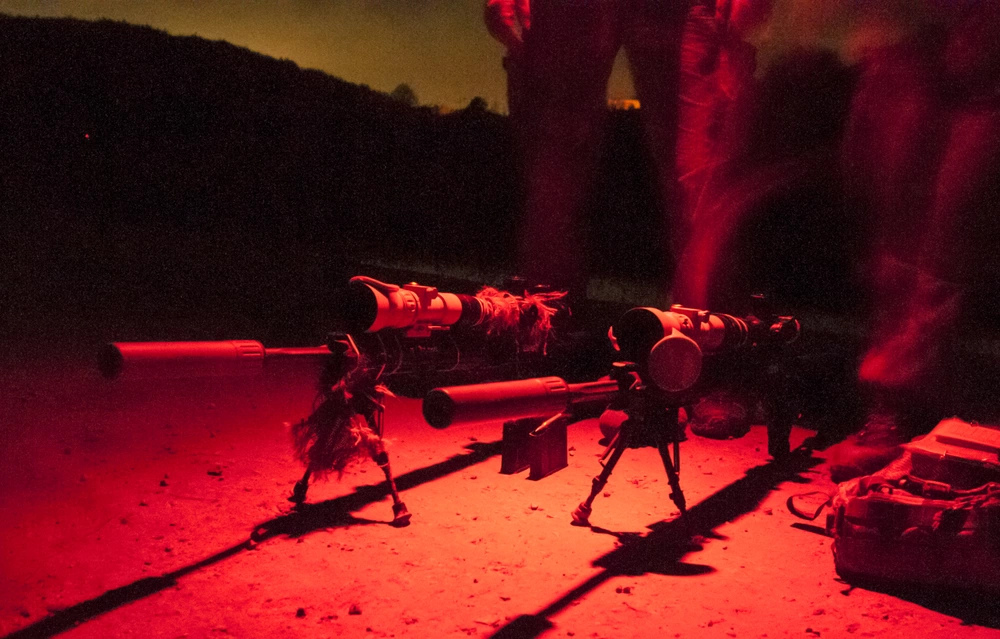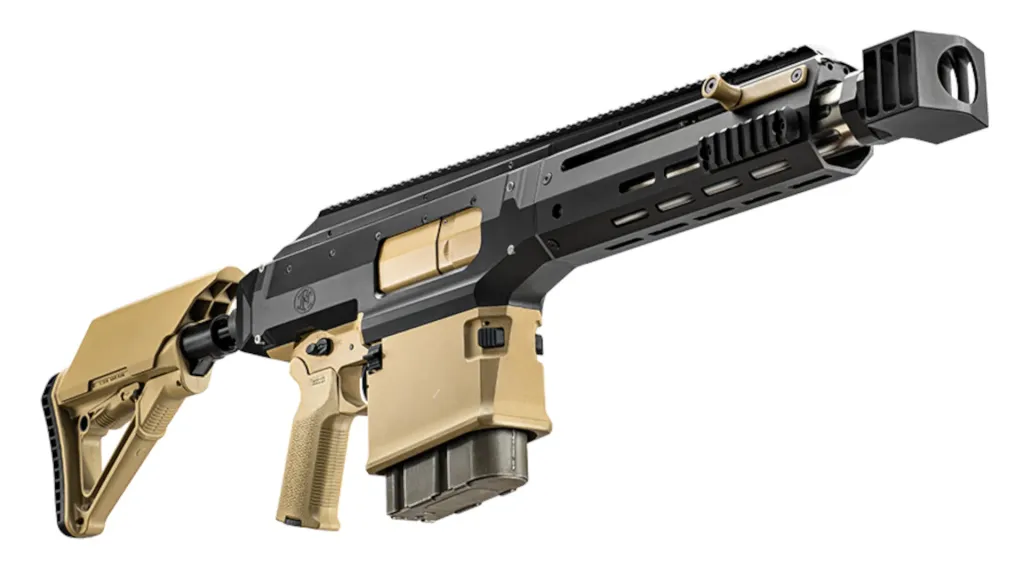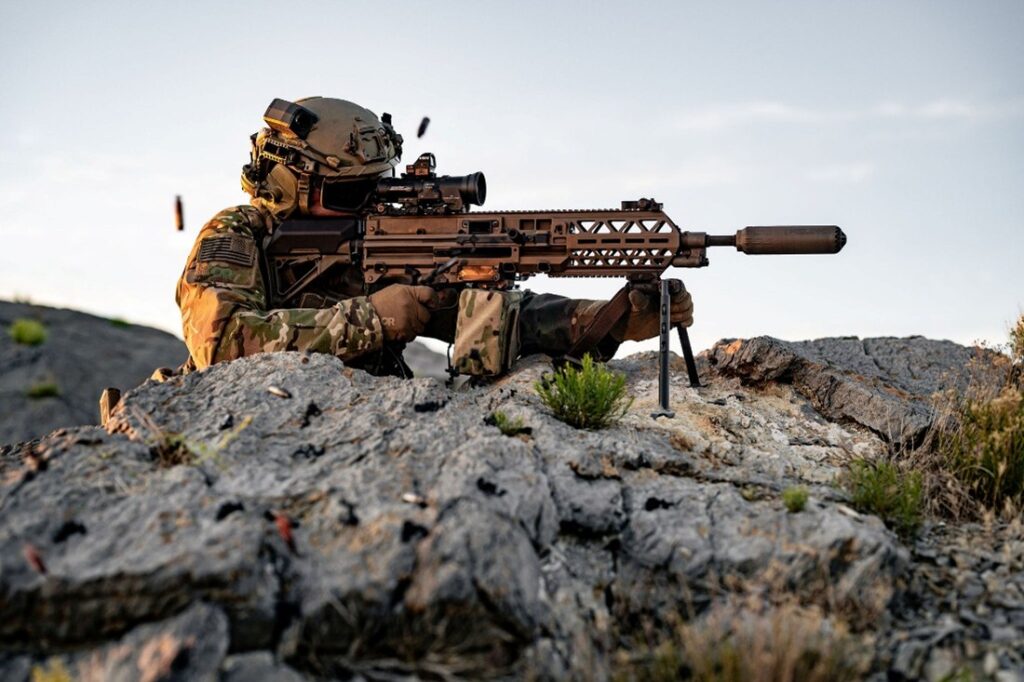The modern rifle hasn’t changed all that much in the last century. Although rifles have gotten lighter, smaller, and easier to shoot, the technology behind them hasn’t seen any major upgrades. Tellingly, Russian soldiers in Ukraine are occasionally armed with the Mosin-Nagants, a late 19th-century rifle. Nevertheless, even though the core technology of the rifle isn’t changing, everything else is.
Today, we are going to explore the ammunition, optics, and accessories that are pushing the rifleman into the future. These accessories won’t replace the skills needed to win the next war, but augment them and help the modern warfighter increase his range, lethality, and ability to face modern threats.
Optics on the digital frontier

Ballistic calculators have long served shooters by providing the necessary data for them to make an accurate shot on a long-range target. In the past, these devices and applications required a fair bit of input from the shooter, but in the modern era, ballistic calculators are being built into optics.
Experiments with ballistic calculators integrated into optics have been going on for years. Recently, the Army’s NGSW program adopted the Vortex XM157 optic, making it the first general-issue “smart” scope in the military’s arsenal. The Vortex, and optics like it, can provide soldiers with real-time holdover information to make accurate shots at extended ranges in a variety of conditions.
While the XM157 is the most notable, a number of smart-style optics have risen in the last few years. Ventures from multiple countries have integrated optics with compasses, round counters, and laser range finders. Systems like the Israeli “Smart Shooter” are designed to be able to track small targets like drones and calculate the optimal firing solution.
Night vision and thermal optics are also shrinking. Steiner and Holosun have both produced red dot optics with thermal overlays. These allow shooters to use a reflex sight and to target heat signatures not viewable by the naked eye. While these aren’t necessarily warfighter-ready when it comes to durability, they are a step forward in the optics realm.
Power sources
Integrating modern technology onto a rifle, creates a need to power that technology.
The Army has launched a project to optimize power sources for the average infantryman. Soldiers are already carrying a variety of different batteries for their various devices, including for lights, lasers, and optics.
The Army is experimenting with an on-board power source that attaches to the weapon and fuels these different electronic systems. Current solutions include using the weapon’s rail system, which is used to attach accessories, to power the optics, lights, lasers, and whatever else today’s warfighters might use.
Related: SOCOM’s latest rifles embrace the 6.5 Creedmoor cartridge
Ammo that’s fast, light, and lethal

Ammo is evolving. Both the United States and Russia are fielding cartridges designed to pierce modern body armor at extended ranges. The 6.8x51mm cartridge in use by the M7 can do so at a range of 600 meters. The Russians, meanwhile, have developed the 6.02x41mm round which is supposed to offer better range and armor-piercing capabilities, but its actual performance is unknown.
The U.S. military is using a hybrid cartridge design for the M7 rifle. This is so the rifle can get the benefits of a brass case with the strength to handle the insane pressure generated by the 6.8x51mm cartridge. The bottom base of the cartridge is steel and the rest of the cartridge is brass. This creates a case that’s still relatively light and won’t risk case ruptures.
Ballistic technology has also experimented with polymer cases and other materials. There are two companies in the United States showcasing polymer-cased ammo – which is proven remarkably lightweight. There hasn’t been enough feedback and experimentation to tell if such ammo is ready for use, but progress is being made.
For larger armaments, we have seen experiments by both the private sector and DARPA to create a guided .50 BMG cartridge. These rounds would serve as long-range precision options that allow for split-second changes to moving targets, to correct for wind, and more.
Airburst and programmable grenade rounds are becoming more and more common. These rounds can have a devastating effect on entrenched enemy forces. The user can program the grenade to detonate at a particular range, and if an enemy is hiding behind cover, the grenade can be launched over or beside the cover and explode as it passes by the enemy.
New precision grenadier weapons will change the game for military forces. FN and Barrett are both producing precision grenade launchers that enable near-direct fire for a grenade-launching system.
Keeping it quiet

A big move by military forces is to mount suppressors on small arms. A suppressor reduces a weapon’s signature by reducing the noise it creates. A suppressor does not fully silence a weapon but does make it more difficult to detect and find at infantry ranges.
Additionally, a suppressor enables effective command and control among small unit leaders, since the reduction in noise makes it easier for soldiers to follow commands and to supply their own information to leaders. Suppressors are a valuable but straightforward addition to military small arms.
The Marine Corps mass adopted a suppressor several years ago and the U.S. Army’s M7 rifle also uses one. The Marine Corps is looking to eventually suppress the majority of small arms in use by the infantry.
The future of lethality won’t necessarily rely on great leaps of firearm technology. Rather, it will revolve around the accessories attached to the rifle and the ammo it fires. The future of military small arms aims to counter modern threats, extend a soldier’s effective range, and improve lethality across the board.
Feature Image: A pair of rifles equipped with night vision and suppressors stand ready for a nighttime course of fire during the Basic Sniper Course, conducted by the International Special Training Centre at the Joint Multinational Readiness Center in Hohenfels, Germany, October 25, 2017. (Photo by 1st Lt. Benjamin Haulenbeek/Special Operations Command Europe)
Read more from Sandboxx News
- Japan planned to launch biological attacks on California with submarine-borne planes
- How Colombia’s drug cartels almost bought a Soviet submarine
- Iconic Black Hawk helicopter has been turned into a drone
- These are all of the US military’s surface-launched precision munitions
- SOCOM’s new commander is an experienced special operations leader











